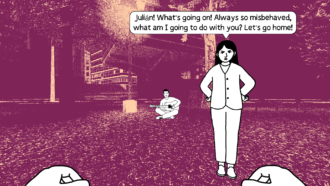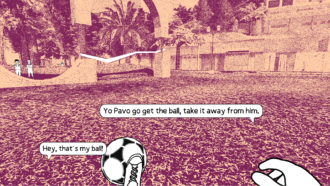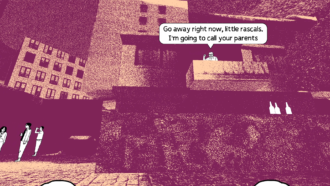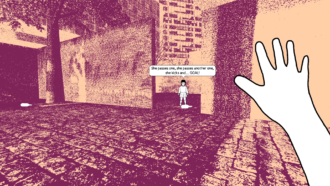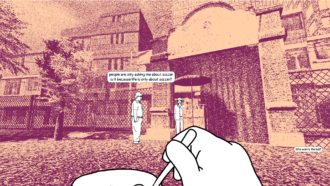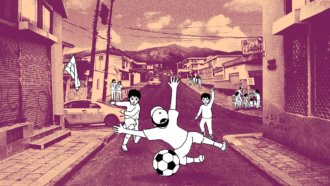Platforms:
Xbox One, PS4, PC, PS5, Xbox Series X|S
Released:
May 1, 2025
Publisher:
Panic
Developers:
Julián Cordero, Sebastián Valbuena
In the 2012 book ‘Rise of the Videogame Zinesters’, game designer Anna Anthropy advocates for games as “personal artifacts instead of impersonal creations by teams” – games not as huge commercial entities but private, unique stories that have more in common with zines (small self-publications) than blockbusters. I open the review with this quote because not only does Despelote neatly fit this description, but it’s also central to the game’s success.
An intimate, personal look at the role of soccer (or football) and play that flies in the face of the EA Sports FC’s of the world, Despelote may be modest in its ambitions, but is no less accomplished as a game. Despite some rough edges and an unsure mechanic or two, I found Despelote to be a highly effective experience in both how hand-made it feels, but also in how it does such an admirable job exploring the role of memory, nostalgia, play and youth in such a distinct setting and way.
Despelote (which apparently loosely translates to ‘mess’ or ‘meltdown’ in English) is a first-person narrative game from developers Julián Cordero and Sebastian Valbuena. It is an autobiographical slice-of-life story based on Julián’s experience growing up in Quito, Ecuador, in 2001 while the city was immersed in soccer fever as Ecuador tried to qualify for the FIFA World Cup, and sees the player playing through various points from Julián’s life that revolve around soccer.
Despelote’s story takes place across little spatial vignettes, mostly set in the same town space that steadily changes over Ecuador’s five qualifying rounds. These vignettes vary between pleasant wanderings around the neighbourhood, flash-forwards of Julián’s teenage years and dreamlike sequences that blur together different visuals, types of play and social settings. The story itself could be considered mundane – there is little in the way of grand emotional beats or twists – but in doing so, it captures a lovely atmosphere around the comforting familiarity and routine of youth. ‘Slice of life’ has rarely felt like such an apt description; Despelote might as well be considered a sequence of vertical slices from Julián’s life meshed into a youthful semi-coming-of-age whole. While it didn’t floor me emotionally or narratively, it’s still remarkably assured in its intentions and accomplishments.
Accentuating this atmosphere is Despelote’s striking visual style. Created through the digitisation of photos recorded on location in Ecuador, the town looks as if it has been pieced together through a collage of faded Polaroids. It reminded me of a few other games, but most notably the 1-bit dotted pixel style of Return of the Obra Dinn, which feels apt given both are accomplished at evoking a specific place and (earlier) time through their visuals. In contrast, everything interactive in Despelote – the characters, soccer balls, etc. – is designed to look like paper cutouts overlayed on the photographed world. While this does lead to some clunky and flat animations, it creates a striking contrast that Despelote’s environments feel both legible and distinctly home-made.
Playing Despelote predominantly revolves around soccer. Indeed, soccer permeates the entire gameworld – you play a great little retro soccer videogame in its opening minutes, you kick a soccer ball around a playground at recess, and the town endlessly hums with anticipation around the World Cup qualifiers. Contrasted with the slick big-budget productions of contemporary sports games, Despelote understands how personal and mundane a part of life play and sports can be. Soccer becomes a central motif that is remixed and reconfigured in a range of different contexts, much like it is for many children. It can be the console game you idly play at home, the sport you casually watch on television at a party, it can be the game you play with a glass bottle and friends, and on and on.
“…Despelote understands how personal and mundane a part of life play and sports can be.”
This leads to Despelote’s most mechanically impressive core mechanics, its first-person soccer. The physics are fantastic – the difference between dribbling while walking vs running, the trickiness of keeping the ball aligned with the camera, and the subtle shift the camera makes when winding up to kick is all very satisfying. The fact that you kick with the right thumbstick while also using it to control the camera is a little cumbersome, but it also feels appropriate in its difficulty. That, alongside the dribbling not being flawless, helps imbue a bit of mechanical resistance that better embodies the experience of a child playing soccer. They’re not a FIFA automaton who treats the ball as an extension of their leg, but just a kid who enjoys the game, but is still a little uncoordinated. I get the sense that a lot of effort went into making these mechanics feel just right, and frankly, the development team properly scored.
You’ll spend a lot of your time while dribbling the ball exploring the central town space at various points in time. The explorable area is modestly sized, but well realised and with plenty of nooks and notable goings-on. It’s in these spaces that the youthful feel of its story and design feel most apparent – you spend time waving at strangers wandering by, annoying the locals, pestering people in the park and setting up arbitrary play goals like kicking the ball into glass bottles perched on ledges. It reminded me of making my own play as a kid growing up in rural Victoria, Australia – we’d bike down the street as fast as we could while getting swooped by magpies, go on river walks, chase the rabbits that would wander into our backyard and, on one memorable occasion, even play what my school friend called ‘fireball soccer’. I’ll leave the details of what that involved up to your imagination.
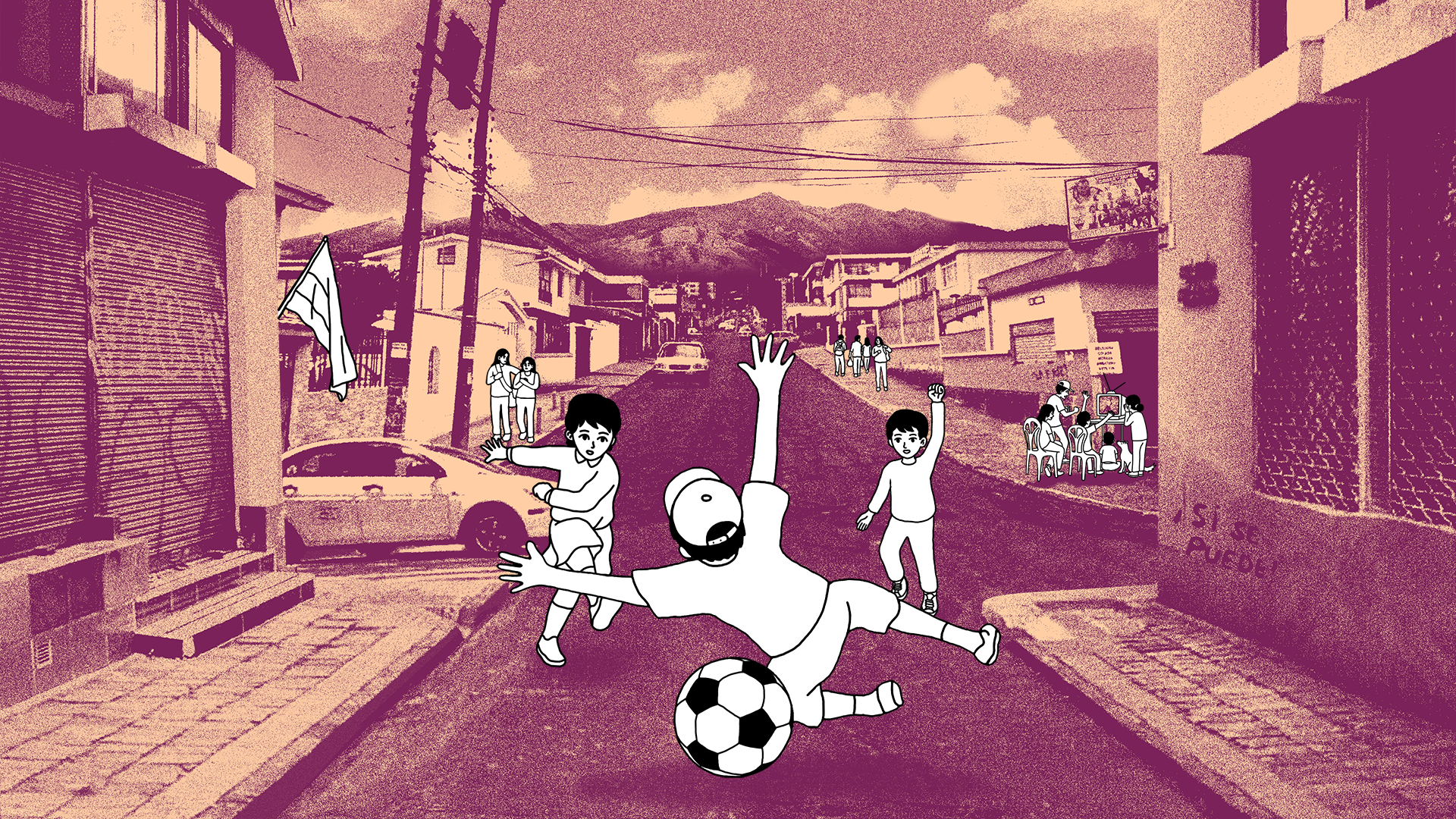
One odd design decision that I have mixed feelings on is that exploring the town is typically a timed exercise. They often start with Julián’s mother telling him to be back at x time (you can check your watch whenever by looking down), and while I understand the affective experience this elicits – the childhood vibe of having segmented play that you snatch amidst your routine – it meant I often felt like I couldn’t explore the town to my leisure, which felt a bit frustrating and took that sense of play away at times. Instead of a space ripe with little details and people to talk to, I would rush around it like a kid who’d just necked a Red Bull, trying to do as many things as I could before getting ushered home. Maybe this was the intended experience, but I unfortunately found it a bit too restricting.
I played the entirety of Despelote in almost one sitting on my Steam Deck, curled up in bed – it’ll take you about 2 hours overall, which felt like the perfect length – and while it felt great on the console, the game itself has some jank in parts. Awkward animations and odd character movements are common, and I encountered a few slowdowns and odd glitches. One moment involved a group of kids pointing at a tree, talking as if there was a soccer ball stuck up there, while I kicked the ball in question around them. None of these instances were game-breaking or too disruptive, but collectively they did take me out of Despelote’s otherwise fantastic atmosphere a few too many times.
8
Great
Positive:
- Gentle slice-of-life narrative
- Stellar first-person soccer gamefeel
- Personal, intimate scope
- Distinct visual style
Negative:
- Some jank
- Limiting time restrictions
Despelote beautifully captures the mundane but rich childhood experience of play and sport through its gentle slice-of-life narrative. Via its stellar first-person soccer mechanics, intimate scope, and outstanding hand-made visual stylings, it succeeds at capturing a personal autobiographical sense of Ecuador and the quietly affecting experiences of youth.
